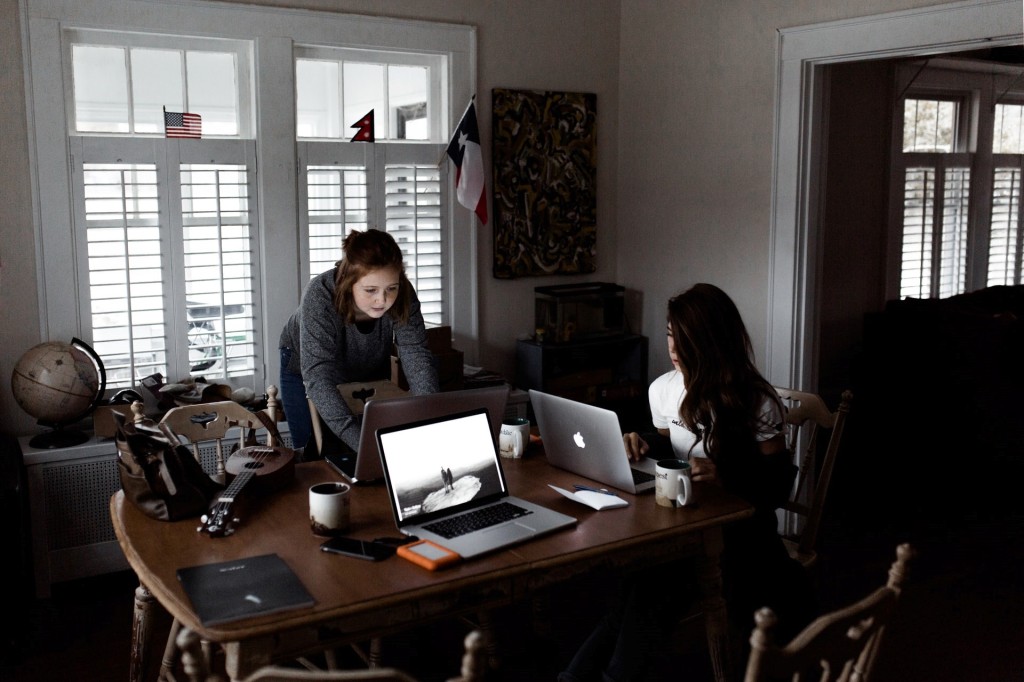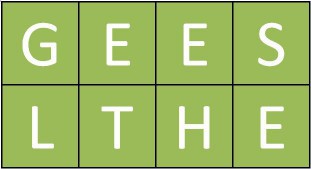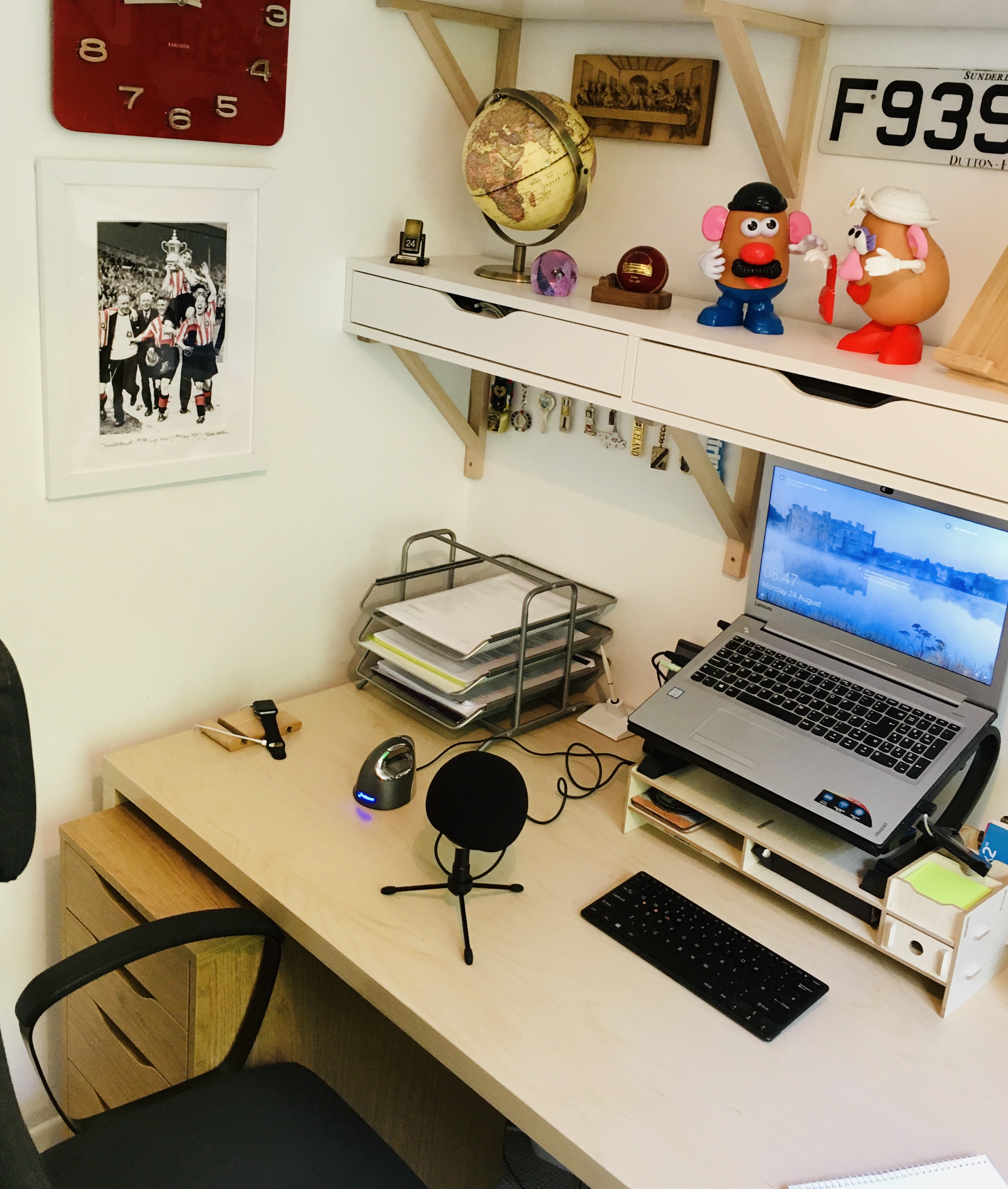By Dr Matt Finn and Dr Laura Smith (University of Exeter, UK)
It was with some trepidation that we set out to run “concurrent” workshops, with some students on campus and others joining the same session online, for second year BA Geography students in preparation for their final year dissertations. Each year in the summer term, after assessment has finished, we run a two-week workshop called Research Planning Fortnight: Getting Dissertation Ready, that introduces the dissertation, and which serves as a transition and handover space between a research skills and methods training module, and the dissertation.
This was a workshop programme that we’d both collaborated on for a couple of years already—with Matt as convenor of the second-year research methods module, and Laura as convenor of the dissertation module. In the emergency conditions of 2020, we’d moved some material online, and embedded other content into the dissertation module in the autumn. For this year, we wanted to return as much as we could to our earlier collaborative and more interactive format. But with cautionary tales abounding from colleagues at other institutions of the challenges posed by ‘concurrent’ or ‘hy-flex’ teaching evolving along with the pandemic, we wondered whether we were being ambitious, or just overly optimistic.
The first week of the two-week block was structured around a series of two-hour workshops each morning. Rather than structuring these workshops on a day-by-day basis, we set out the themes we were going to cover across the week, but with a flexibility that meant we could pause for longer or shorter on particular themes as needed. This meant we could easily adapt and respond to student interests, queries, and questions.
Another blogpost here covers more about the practicalities of the sessions, and some student responses. In this post, we reflect on the workshops including a focus on questions about spatiality – the ways that spaces shape and are shaped by society.

Photo by Toni Koraza on Unsplash
Spatiality
One of the things that shaped our practice was a desire to make both ‘online’ and ‘on-campus’ spaces feel like equally legitimate learning spaces. We planned for an on-campus host (Matt) in the lecture theatre and an online host (Laura) on Zoom and we regularly passed conversation back and forward between us. This might not be feasible regularly in terms of staffing, but it was evident in student responses that this aided the sense that both spaces were equally important.
That both spaces are equally significant can sometimes be undermined by our language if we talk about virtual vs. real spaces, or online spaces as if they are distinct from physical spaces (Kinsley, 2014). While we avoided online vs. in person language (all learning is still embodied) we did still use online or on-campus. However, we realized this too didn’t reflect what was happening.
In fact, as we all used Padlet, and the Zoom chat, as a shared medium of interaction all students were ‘online’, not only those joining from other locations. In that sense, it was less a question of joining online or on-campus but joining on-campus or from other locations (such as student accommodation or wherever the student might be). This has important implications for understanding student choices about how they wanted to join in, and for technology use.

Photo by Andrew Neel on Unsplash
Sociality
The various lockdowns and easings over the last 15 months have reinforced the particular sociality and sense of community offered by on-campus teaching. In planning the workshops, we wanted to incorporate and celebrate different forms of social learning. Students could choose, day-by-day, how and where they wanted to learn – with friends meeting up to walk together to the lecture theatre, as well as a chance to study amongst a larger group, while Zoom allowed students to learn as a household or bubble, or to fit the workshops more easily around other commitments. Zoom also allowed students not in Exeter to participate in the workshops. This flexibility was something that came through in student feedback as being particularly appreciated.
But it’s also important to remember that for some students, the pandemic has more severely interrupted or disrupted this sense of community, and so coming on to campus could be unsettling, if there are no friends nearby to go with, and with no collaborative or small group working in the workshops. The Zoom chat became the default space for conversations, asking questions, and sharing ideas and reflections.
Technology
Students joined in and from multiple spaces in a range of digitally mediated ways. An implication of this concerns the digital infrastructure that enables access to education in these ways, including that we recognize the digital inequalities in and between each space.
Previous comments from colleagues, and schoolteachers, focused on the challenge of the technology in the room from which the educator was teaching – whether camera, microphone(s) to pick up different speakers and sound. While investment is taking place in the physical infrastructure of rooms there is a need for it to be present and reliable, and matched by the know-how to use the equipment, understanding what it enables and constrains in terms of pedagogy. Together these form part of an institution’s digital culture.
Similarly, issues of wifi access in student accommodation was noted as a reason for one student to attend on campus, for another their laptop speaker had gone and they didn’t know if this would be a barrier to attending in person (it wasn’t as the Zoom audio came through the room’s speakers).
While full participation looks like it requires each student to have a device (certainly on campus) we can remember above that practices of learning together with shared devices means, lack of access to a device might be partially mitigated, and hidden, by watching with a fellow student. This means a student’s digital traces – or their absence – are not necessarily indicative of their individual engagement or lack of it. These inequalities remain a key issue.
Concluding thoughts
Our concurrent teaching went better than we had feared, and had positive, and thought-provoking, student feedback. It has made us think repeatedly about the spatiality of learning which has important implications for understanding learning as a socio-technical practice.
In looking to the future, if concurrent teaching becomes more typical, it does not remove but reconfigures some of the barriers to education, while opening up new forms of access.
Some students reflected that they had found online lectures, and pre-recorded lectures, to be very difficult to engage with and for them there was a relief in being able to attend on campus, while others had found the way learning materials had been packaged far more conducive to their learning and lives. For them, the option to continue learning in ways that didn’t require being in the lecture theatre were important.
While there is no ‘one-size-fits-all’ solution, it seems important to us to continue to pay attention to the spatialities of learning, attentive to the opportunities and limitations new approaches bring.









